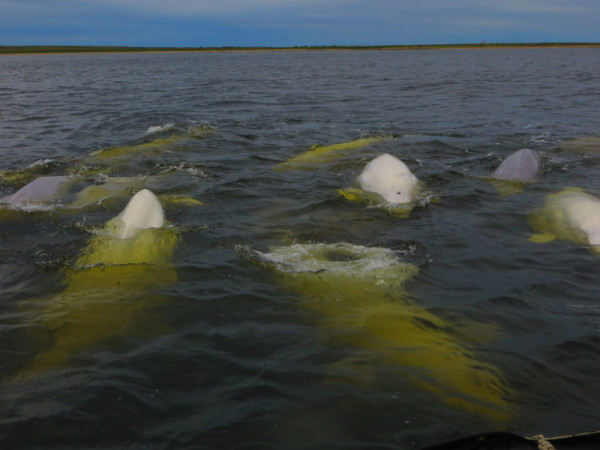New plan includes four ways to keep the beluga swimming wild and free. Here’s how
The government of Manitoba released today its first provincial plan to protect beluga habitat in Western Hudson Bay. This population’s status is currently listed as being of special concern and today we issued this statement of support.
Belugas are a priority species for WWF-Canada. WWF works to identify critical beluga habitat in the Arctic and for endangered St. Lawrence River populations to ensure they are well protected. We’ve also completed oil-spill trajectory modeling that maps out multiple oil spills in the Arctic’s Beaufort Sea and how spills from ships and oil and gas exploration would interact with wildlife, including belugas.
WWF has identified many threats facing belugas, including pollutants and climate change. These are the top four recommendations from the Manitoba report regarding what Canada can do to protect what Raffi calls the ‘little white whale on the go.”
Find out what belugas want
Canada’s Western Hudson Bay is home to the largest summering concentration of belugas in the world; 57,000 individuals making up nearly 50 per cent of the Canadian beluga population. We don’t yet know why belugas return here each year, although the shallow, warmer and productive waters are likely the main attraction. To understand which areas need protecting the most, Canada needs to conduct more research on beluga behavior.
Curb pollution sources
As industrialization increases in Western Hudson Bay, the threats to belugas from contamination and spills are increasing. But we don’t know how bad the problem is. More research is needed to understand pollution levels and sources in the region, and regulations and policies are needed to ensure pollutants and waste are properly managed.
Protect the most sensitive areas
Currently, there are no protections in place for the summer grounds for these belugas. We know that the marine regions around the Churchill, Nelson and Seal rivers are regular gathering places for belugas with their young calves. These regions should be prioritized for inclusion in Parks Canada’s National Marine Conservation Area program to create a vital corridor of habitat for the summering belugas.
Create safe migration zones
With increasing industrialization in Hudson Bay comes increased shipping. Governments, researchers and companies must work together to develop a marine traffic plan to ensure large ships stay away from beluga migration routes.
While threats for the species are imminent, Manitoba’s plan, alongside the Canadian government’s recent commitment to protect 10 per cent of Canadian marine areas by 2020, leave us optimistic.


